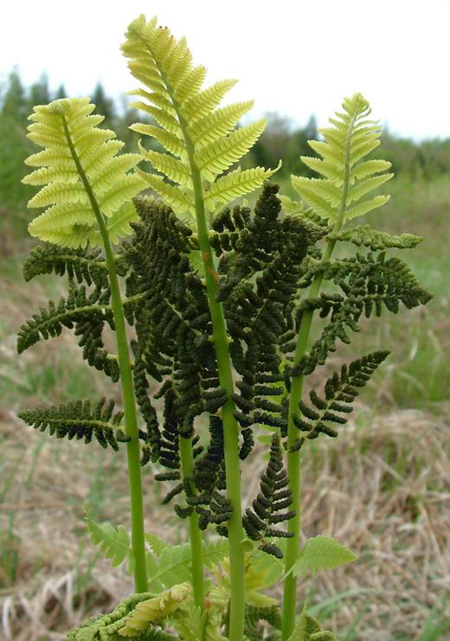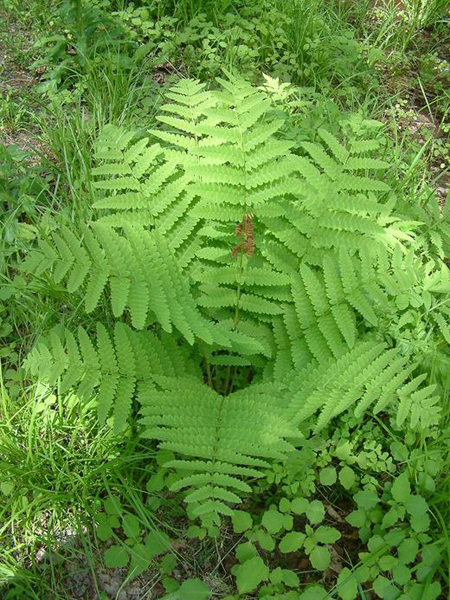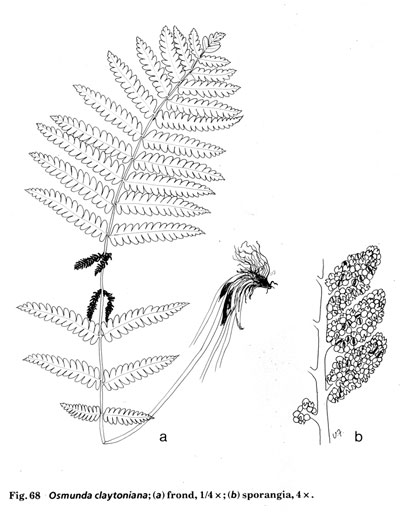| Osmunda claytoniana | ||
Interrupted fern | ||
|
Etymology
Named in honor of John Clayton (1686-1773), who has been described as the greatest botanist in America at that time.
Description
Rhizome: erect, massive, forming a trunk, occasionally branching, hairs and old stipe bases woven together with black, fibrous roots.
Frond: 90 cm high by 20 cm wide, though sometimes taller, deciduous, dimorphic, outer ring of fronds arching, sterile, inner erect, fertile, blade/stipe ratio: 2:1. Stipe: stipules (flared leaf base), unique to the family/genus, hairy when young, soon glabrous, vascular bundles: 1 in a U-shape where the top of the arms continue to curl. Blade: 1-pinnate-pinnatifid, sterile fronds elliptic to oblong, arching, pinnae broadly oblong; fertile fronds with 2-7 middle pinnae pairs greatly constricted, bearing sporangia, withering soon, somewhat waxy, shedding water, reddish to light brown hairs, soon falling. Pinnae: 20 to 30 pair, catadromous, rotated to the horizontal; margins entire, rounded apex; veins free, forked. Sori: none, indusium: absent, sporangia: large, globose, greenish young, tan or black when mature, spores green, maturity: mid spring to early summer. Dimensionality: fronds vertical early in the season, declining later. Culture
Habitat: woods, on hummocks in swamps, more or less neutral soil.
Distribution: eastern North America, eastern Asia and Himalayas.
Hardy to -35°C, USDA Zone 3.
Distinctive Characteristics
The central, sporangial section on fertile fronds is unique.
Synonyms
Osmundastrum claytonianum (L.) Tagawa |
|
|

Osmunda claytoniana.Shortly after emergence, very upright habit, Quebec in late May. © 2005 Louis-M. Landry at CalPhotos |

Osmunda claytoniana. Relaxed habit, Quebec in early June. Not, of course, the same plant. © 2005 Louis-M. Landry at CalPhotos |
